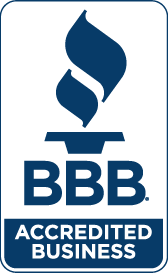Eligibility for Subchapter V under § 1182

An opinion by Bankruptcy Judge Robert E. Littlefield, Jr. of Albany, N.Y., is a mixed bag for individuals aiming to qualify for reorganization under Subchapter V of chapter 11. See In re Hillman, 22-10175 (Bankr. N.D.N.Y. June 2, 2023).
Fending off a lawsuit arising from a defunct business supplies one (1) element of eligibility for Subchapter but Judge Littlefield’s June 2 opinion also requires the debtor to show that half of total debt must have arisen from the particular business relied upon for eligibility.
The individual debtor filed a chapter 11 petition and elected treatment under Subchapter V. She owned or had owned two (2) businesses. The debtor had no debt arising from one of the businesses that was evidently still in existence but she had almost $700,000 in debt arising from a business that was no longer operating.
Specifically, the debtor had been the owner of a business that defaulted on a lease. The debtor was being sued on her personal guarantee of the lease. The landlord filed a claim for about $700,000 on the guarantee.
Total debt was almost $1 million, so everyone agreed that 50% or more of her debt had arisen from one of the businesses, satisfying one of the criteria for Subchapter V.
The landlord objected to the debtor’s eligibility for Subchapter V, contending that the debtor was not engaged in business at the time of filing. The Subchapter V trustee supported the debtor’s eligibility.
The outcome turned on the definition of a Subchapter V debtor. Pertinent to the case before Judge Littlefield, Section 1182 requires the debtor to have:
noncontingent liquidated secured and unsecured debts as of the date of the filing of the petition or the date . . . in an amount not more than $7,500,000 . . . not less than 50 percent of which arose from the commercial or business activities of the debtor.
Judge Littlefield first confronted the question of whether the debtor must have been engaged in “commercial or business activities” as of the filing date. He said that a majority of bankruptcy courts found “a temporal restraint and require the eligibility analysis to review the debtor’s activity as of the petition date.” He cited, among others, Nat’l Loan Invs., L.P. v. Rickerson (In re Rickerson), 636 B.R. 416, 424-25 (Bankr. W.D. Pa. 2021); and In re Offer Space LLC, 629 B.R. 299, 305-06 (Bankr. D. Utah 2021).
Judge Littlefield therefore held “that the Debtor must demonstrate she was presently engaged in commercial or business activities as of the Petition Date.”
Next, Judge Littlefield examined the “totality of the circumstances” to understand whether the debtor was engaged in business on the filing date. He said that “most courts” interpret the statute broadly “to provide wide availability for debtors to elect to file under subchapter V,” citing In re Ikalowych, 629 B.R. 267, 276-77 (Bankr. D. Colo. 2021). Citing In re Port Arthur Steam Energy, L.P., 629 B.R. 233, 237 (Bankr. S.D. Tex. 2021), Judge Littlefield held that a “debtor can qualify for subchapter V absent the company’s traditional business operations where the company is winding down.” Applying the law to the facts, Judge Littlefield said that the debtor was defending a lawsuit on her personal guarantee of the commercial lease. He held that defense of the suit on the “personal guaranty . . . is sufficient winding down activity for the Debtor to satisfy the ‘engaged in commercial or business activities’ requirement of § 1182(1)(A).”
Judge Littlefield turned to a question on which courts are split: Is it sufficient if 50% of the debt arose from all of the debtor’s businesses, or must more than 50% have arisen from the specific business making the debtor eligible for Subchapter V?
Once again citing Ikalowych and calling it the “seminal case,” Judge Littlefield held that 50% or more of the debt must have arisen from the business that qualifies the debtor for Subchapter V.
In the case before him, the debtor had $700,000 in debt from her guarantee of the personal debt from the business that made her eligible for Subchapter V. He allowed the debtor to proceed in Subchapter V.





